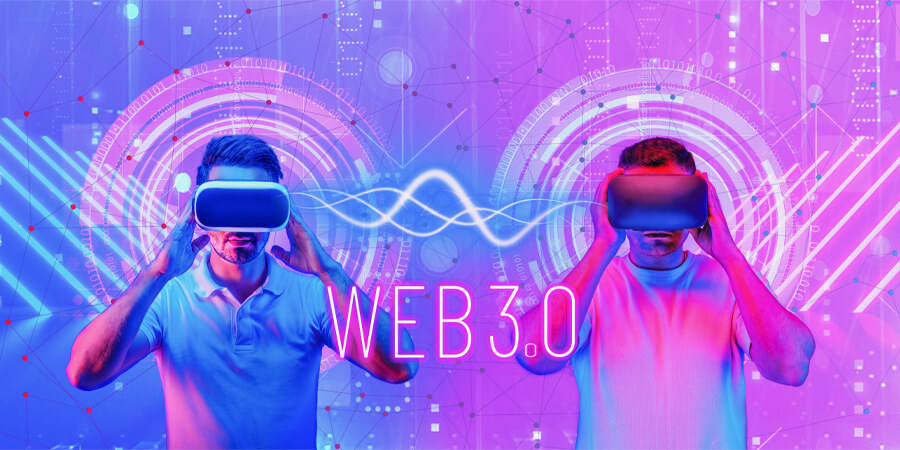The metaverse and Web3 are notably two emerging technologies that have the potential to transform the way we interact with the internet and with each other. The metaverse is a virtual world that can be accessed through various devices, such as virtual reality headsets, smartphones and computers. It is a fully immersive experience that combines virtual reality, augmented reality and the internet, and it allows users to interact with each other and with digital objects in a three-dimensional space.
Web3, on the other hand, is the next evolution of the internet, where decentralized technologies such as blockchain and cryptocurrency are used to build a more open, transparent and secure web. It aims to create a more democratic and equitable internet, where users have more control over their data and can participate in the governance of the platforms they use.
Together, the metaverse and Web3 have the potential to create a new platform for the internet, where users can participate in a fully immersive digital world and interact with each other in ways that were not possible before. They can create new economies where virtual goods and services can be bought and sold and where users can earn cryptocurrency for their contributions to the platform.
How the Metaverse Is Emerging from Our Digital Behaviors
In the midst of the buzz and backlash surrounding Web3 and the metaverse, it is crucial for leaders to actively engage with these technologies and experiment with their underlying solutions. Failure to do so may result in being left behind as a new wave of metaverse and Web3-native disruptors emerge, challenging existing Web2-era business models. Web3 and the metaverse have the potential to drive technological breakthroughs, shaping new forms of communication, innovation, prototyping and community formation that can lead to new business opportunities.
Our digital behaviors are becoming increasingly immersive and interactive, with people using global networks to socialize, modify their appearance with augmented reality filters and attend virtual concerts and events in the gaming worlds. Businesses are also adapting, holding meetings remotely and using VR and AR headsets for training and collaboration. Generation Z ranks playing video games as their favorite form of media and entertainment, and some game worlds are running out of virtual real estate due to high demand. Surprisingly, research found that over half of people in nine markets prefer to spend their time online rather than in the real world. These behaviors and preferences demonstrate that several generations have become accustomed to digital interfaces, software, interactivity and global connectivity. We are immersing ourselves in the digital realm and increasingly blurring the lines between the physical and virtual worlds. Therefore, it is these behaviors and uses that are driving the emergence of Web3 and the metaverse amidst the hype and criticism.
To enable and respond to the accelerating digital behaviors, many technology, media and telecom (TMT) companies have laid the groundwork for an interoperable metaverse. Telecommunications providers have extended advanced connectivity to businesses, households and individuals, enabling more interaction, immersion and collaboration. Technology providers have established hyper-scale platforms that empower innovation and operations while delivering new generations of hardware that support larger and more complex tasks. Media and entertainment companies have leveraged technology and telecommunications to enhance content and storytelling, creating richer, more interactive and more social experiences for audiences worldwide. All of these efforts have contributed to the development of an interoperable metaverse that is more accessible and inclusive for users.
Building Capacity for Tomorrow
Leaders must build the capacity to adapt and evolve for the future, as the metaverse and Web3 continue to shape the next generation of the internet. This requires a shift in mindset from simply maintaining the status quo to actively seeking out new opportunities and partnerships. Collaboration across industries will be crucial for building a sustainable and equitable metaverse. Businesses must invest in their employees, providing them with the necessary skills and training to thrive in a rapidly changing technological landscape. They must also embrace diversity, equity and inclusion to ensure that the metaverse benefits everyone, not just a privileged few. By focusing on these goals, leaders can help build a metaverse and Web3 ecosystem.
While exploring Web3 and metaverse solutions, leaders should be mindful of the pace of adoption and growth, especially for immersive experiences. Balancing short-term capabilities with long-term planning can help businesses build the foundations for new business models. However, there are still many unknowns, such as the impact of regulation on networks, semiconductors, software and consumer devices; the evolution of media and entertainment; the role of AI; and the future of risk and cybersecurity. As we approach this big shift, it is important to consider the broader societal implications beyond business and technology.
In conclusion, the metaverse and Web3 are shaping a new application layer for the internet, driven by our evolving digital behaviors and the need for more immersive and collaborative experiences. While both the hype and criticism surrounding these technologies may be overwhelming, leaders should seek to understand their underlying solutions and experiment with them to build new business models and indeed the foundations for what is to come.
